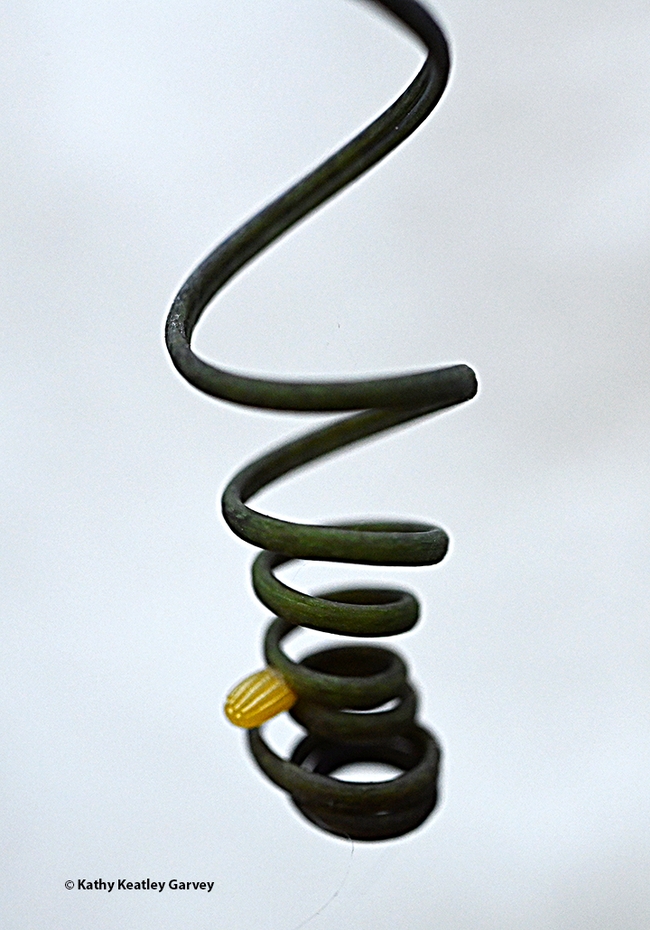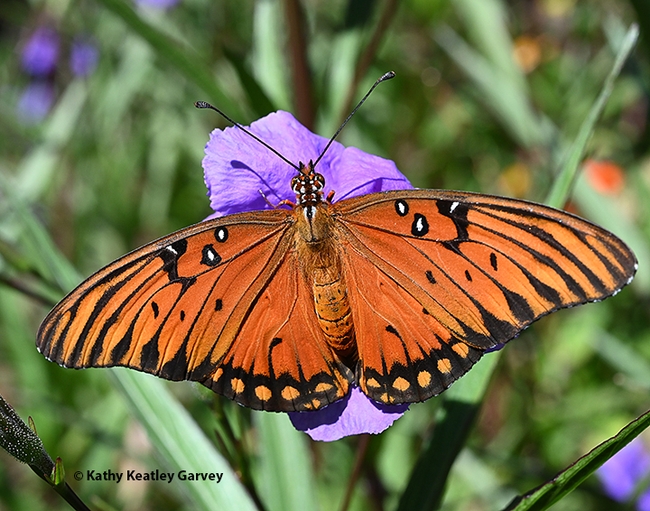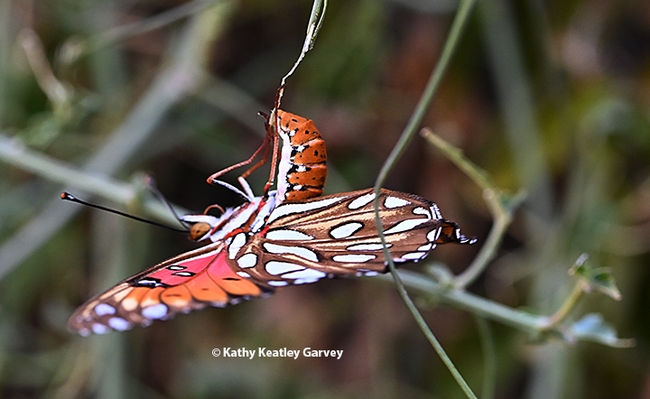
The Gulf Frit, or "passion butterfly" (Agraulis vanillae), lays her tiny, yellow eggs, singly, on her host plant, the passionflower vine (Passiflora).
The egg? It's about the size of a pin head. Look closely and you'll see it's ridged like the raised lines of sand or a miniature ear of corn.
Often a Gulf Frit will deposit her egg on a tendril, which looks like a cork screw gone ballistic. Sometimes she'll lay her egg on a leaf, a bud, a stem or a nearby wall, gate or fence. Mama, how can we find our way?
We've grown Passiflora in our garden in Vacaville for decades. Some seasons the 'cats will skeletonize the plant, eating everything--from the leaves and blossoms right down to the stems.
Some gardeners refuse to plant the passionflower vine because a stripped plant makes them look like "a bad gardener." They have been known to pluck off the hungry 'cats to "save" the plant.
We let nature take its course. Butterflies mate, eggs hatch, caterpillars crawl, chrysalises form, and the cycle starts all over again. An egg is the promise of a new generation.
Last year the predators, including California scrub jays, praying mantises, spiders, yellowjackets and European paper wasps, grabbed their share of the 'cats.
This season, no. The scrub jays have, for the most part, vanished. Hey, look at that hawk circling our yard! The praying mantises are gone. And we haven't seen a yellowjacket, European paper wasp or spider for weeks.
It's a good year for the Gulf Frits! And a bad year for the passionflower vine... It is about to be skeletonized.
Attached Images:

The adult Gulf Fritillary butterfly is a brilliant orange, with silver-spangled underwings. This one is nectaring on a Mexican petunia in a Vacaville garden. (Photo by Kathy Keatley Garvey)

A Gulf Fritillary laying an egg on a tendril of a passionflower vine in a Vacaville garden. (Photo by Kathy Keatley Garvey)